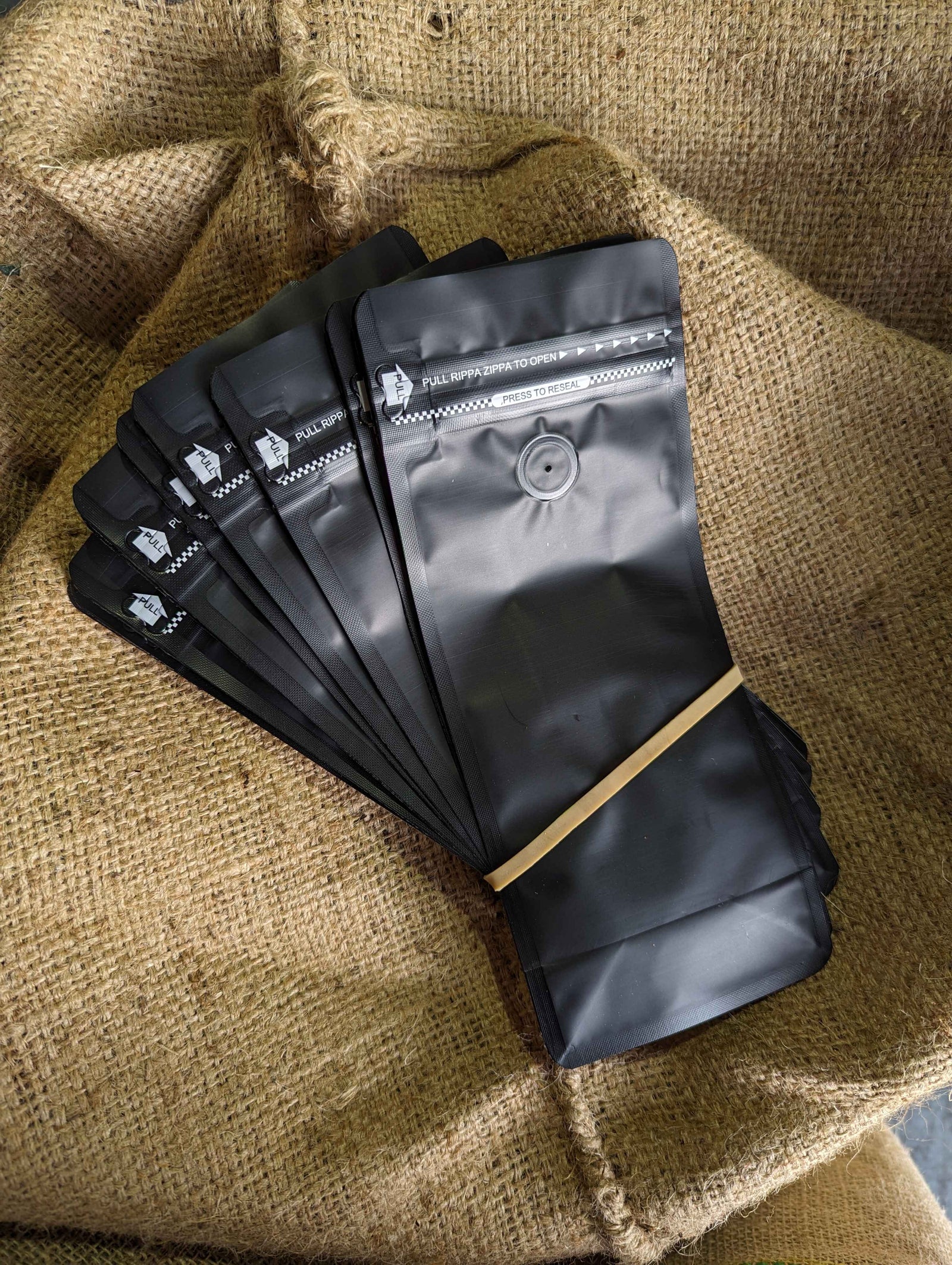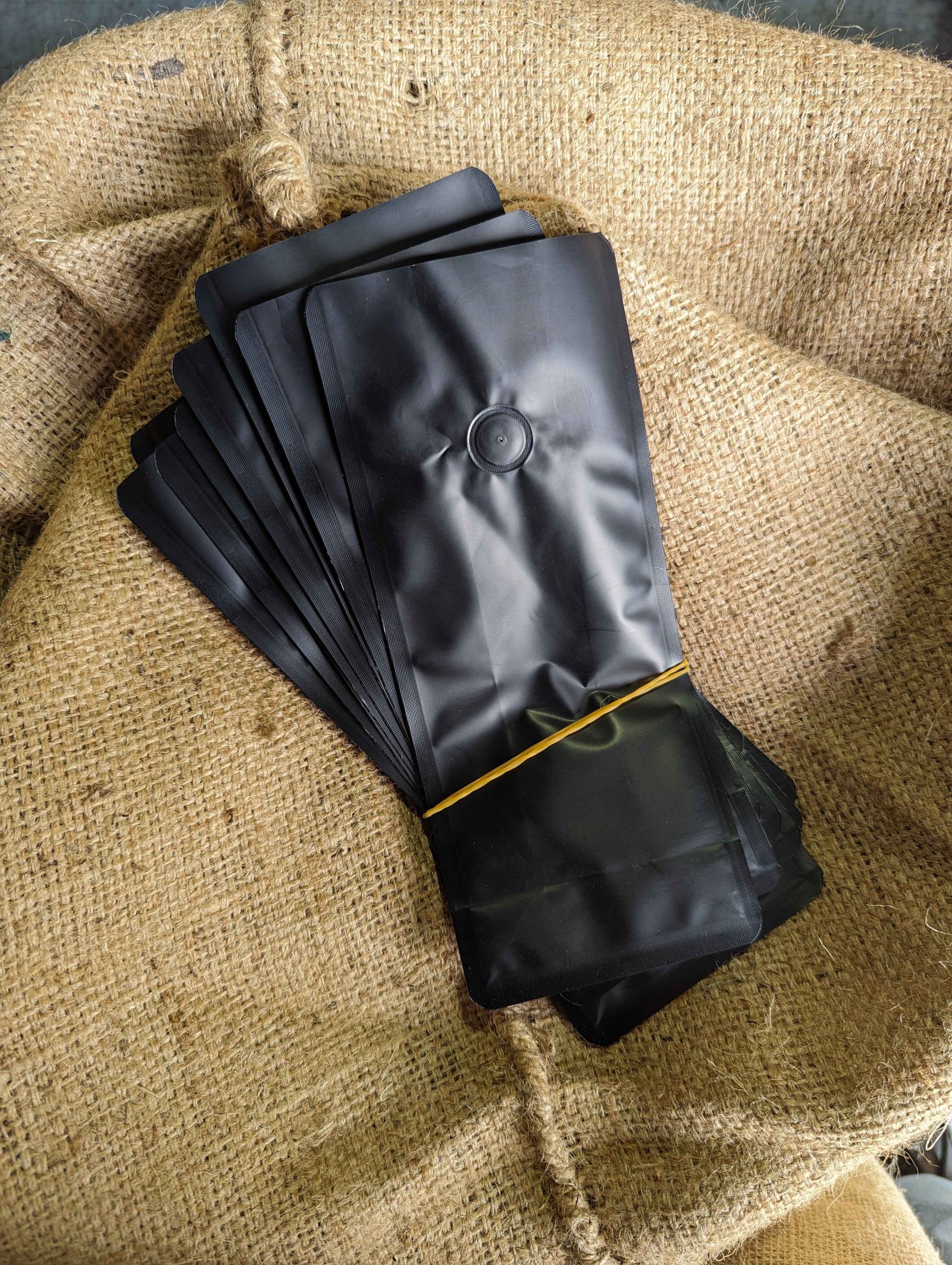OVERVIEW:
From the mist-shrouded highlands of Aceh Tengah, this Organic Sumatra Gayo Supreme offers a bold, distinctive profile that speaks to both Indonesia’s natural complexity and its unique processing traditions. Expect lemon zest and dark chocolate, layered with earthy leather and spice, a full, heavy body, and a lingering finish of black pepper. The hallmark wet-hulled (giling basah) process gives this coffee a rustic intensity and syrupy texture that is unmistakably Sumatran.
PRODUCERS – KBQB COOPERATIVE:
This coffee is produced by Koperasi Baitul Qiradh Baburrayyan (KBQB), an organic and Fairtrade-certified cooperative based in Aceh Tengah. The coop is part of a growing movement in Indonesia where smallholder farmers—averaging just 1 hectare of land each—unite to gain collective bargaining power, share resources, and access training. The KBQB Coop supports producers in improving quality, sustainability, and traceability. In a region where coffee is often intercropped with vegetables, maize, and fruit for subsistence, the coop model ensures that coffee remains a viable cash crop for generations to come.
ALTITUDE AND LOCATION:
Coffee is grown in the cool, humid highlands of Aceh, where elevations between 1,200–1,500 masl create optimal growing conditions for Arabica varieties such as Ateng, Gayo 1, Timtim, and Abyssinia. The region is rich in volcanic soil and biodiversity, contributing to the coffee’s depth and character.
PROCESSING – WET HULLING (GILING BASAH):
This traditional Indonesian process is both practical and iconic. Due to constant humidity and unpredictable rainfall, parchment can’t be dried fully before hulling. Instead:
Cherries are handpicked and pulped at or near farms using small manual or motorized pulpers.
The mucilage-covered beans are fermented overnight in buckets or bags, then washed.
Parchment is partially sun-dried for half a day to two days, reaching 30–40% moisture.
Parchment is wet-hulled by collectors or local processors—removing the parchment while the bean is still soft and moist (labu).
The beans are then dried to 14–15% moisture, producing asalan—green coffee that is unsorted.
Exporters (mainly in Medan) complete the drying, remove defects, and prepare the final lot for export.
This method yields the signature full body, muted acidity, and earthy spice that Sumatran coffee is famous for.
HISTORICAL CONTEXT:
Indonesia has been cultivating coffee since the late 1600s, introduced by the Dutch East India Company. By the 18th century, it became the first country outside of Ethiopia and the Arabian Peninsula to export coffee at scale. Despite setbacks such as the coffee leaf rust epidemic in the 1800s (which shifted production toward Robusta), Arabica has persisted in key regions like Aceh. Today, Indonesia ranks as the 4th largest coffee-producing country, with less than 20% of its output being Arabica.
NATIONAL COFFEE CULTURE:
Increasing domestic demand for high-quality coffee, bolstered by a passionate internal market and even presidential support, is reshaping the landscape. Producers are now using social media and local e-commerce platforms to sell directly to Indonesian consumers. As a result, some of the best specialty lots are remaining within the country for the first time—raising the bar for quality and farmer income.

 Matte Black Coffee Bag Bundle - With Valve & Rippa Zippa
Matte Black Coffee Bag Bundle - With Valve & Rippa Zippa Matte Black Coffee Bag Bundle - With Valve
Matte Black Coffee Bag Bundle - With Valve






